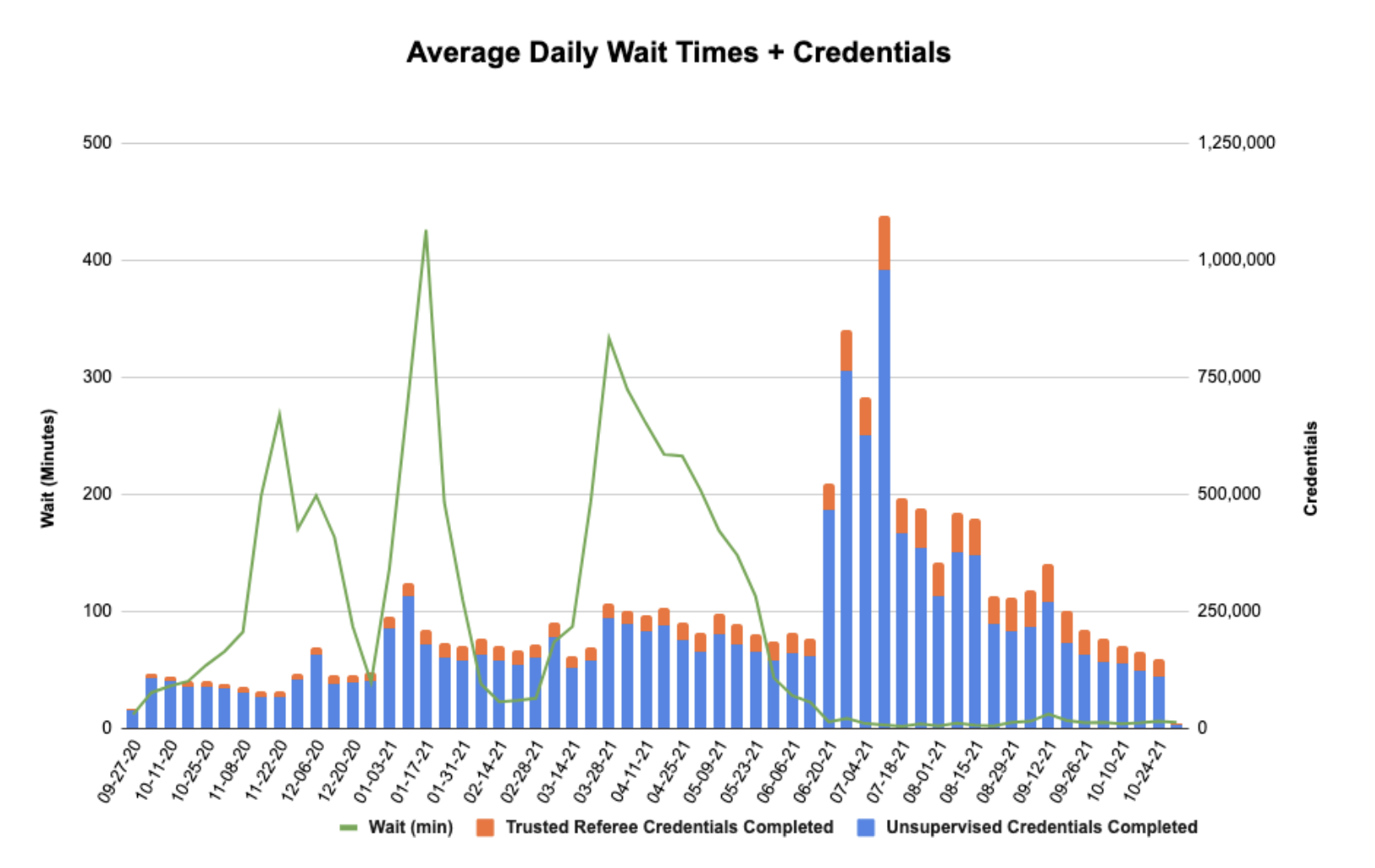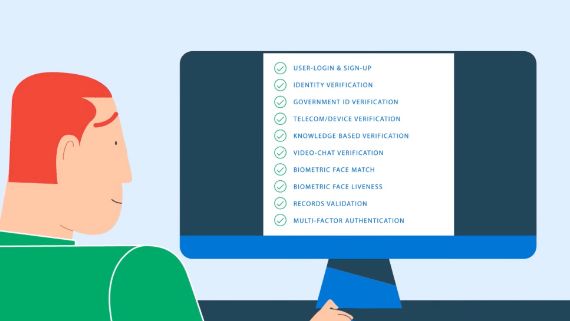ID.me Statement on House Oversight Committee Report
From: Terry Neal – Chief Communications Officer – ID.me
ID.me is a digital identity network that has dramatically expanded access to government services for disadvantaged Americans. Since it was founded, ID.me has pioneered alternative pathways for millions of people to verify their identity online, particularly for individuals who do not have credit history, are underbanked, are without a home, or live overseas and therefore have difficulty accessing government benefits. As has been reported, ID.me has nearly doubled the number of people able to create an IRS account, and made it easier for many Americans — including low income earners and minorities — to access their tax information.
On Fraud Prevention for States:
ID.me provided critical assistance to state unemployment agencies facing a historic amount of fraud and demand from Americans in need. Five states have credited ID.me with helping to prevent $238 billion in fraud. California alone credited ID.me with helping to prevent $125 billion in fraud. The total sum – $238 billion – is more than China’s annual defense budget for 2021. National security officials believe the fraud has gotten so large as to constitute economic warfare against the United States. The Deputy Assistant Director of the FBI, Jay Greenberg, said, “It’s definitely an economic attack on the United States.” Jeremy Sheridan, who directs the office of investigations at the Secret Service, called it “the largest fraud scheme that I’ve ever encountered.”
On the $400 billion estimate:
ID.me based our initial estimate on our observations detecting and preventing identity fraud between 2020 and 2021. We had already been helping more than 20 states to address surges in COVID-related benefit applications prior to formulating a perspective on an overall fraud figure.
Department of Labor (DOL) Office of Inspector General (OIG) recently released an audit finding that 42.4 percent of pandemic unemployment benefits were improperly paid in four states they assessed. Further, Michigan reported $8.5 billion dollars in fraudulent payments, a fraud rate of about $850 million for every million residents in the state. The Heritage Foundation also calculated $357 billion dollars in improper payments during testimony to the House Committee on Oversight and Reform.
Assistant Secretary of the Treasury for Terrorist Financing and Financial Crimes, Elizabeth Rosenberg, noted, “When some of the states, such as Arizona, recognized that they were being defrauded, they partnered with a digital ID company called ID.me. Almost immediately the fraud ring saw the game was up.” Deputy District Attorney for Sacramento County Nick Johnson said pandemic fraud numbers are dropping thanks to ID.me verification, but added that the numbers are not at zero. “The mass volume, what we were seeing, thousands and thousands of victims on an almost daily basis coming in, that’s done because of the verification,” Johnson said.
As state agencies realized the extent of the fraud that had penetrated their systems prior to implementing ID verification, many of them asked ID.me to verify months worth of claimants en masse to avoid paying criminal organizations and individual fraudsters hundreds of dollars a week on an ongoing basis. This situation, which required ID.me to verify a much larger number of people than had been forecast on short notice, certainly caused video chat verification times to rise for legitimate claimants. We worked tirelessly to serve Americans who needed aid, and we regret the long wait times that individuals endured while we fought to clear fraud out of the system. This situation was short-lived and temporary and caused by historic fraud. Excluding specific episodes, wait times have generally been below 30 minutes as they are today.
ID.me recognizes fraud is a difficult number to pin down and provided our estimate as an additional data point. In March 2022, DOL OIG revised their estimate of improper payments from $87B to $163B and noted the actual rate is “likely higher” as the auditing work had not been completed. In its September 2022 report, DOL OIG cited hindrances to “OIG’s timely and complete access to state UI claims data to assist in detecting and deterring fraud.” Calling ID.me’s estimate too high or baseless is premature, and we welcome continued investigation into this important matter.
California EDD – $125 billion
“EDD takes an aggressive approach to combating fraud and these fraud-fighting efforts have blocked an estimated $125 billion in unemployment insurance fraud attempts during the pandemic.”
New Jersey DOL – $5.4 billion
“To date, NJDOL has identified more than 500,000 attempted fraudulent claims and prevented more than $5.4 billion in losses.”
Georgia DOL – $10 billion
“Through identity verification, Georgia prevented an estimated $10 billion in fraudulent payments.”
Arizona DES – $75 billion
“As Arizona was one of the first states to deploy program integrity measures, the Department estimates it prevented more than $75 billion in unemployment benefit fraud.”
Florida DEO – $23B
“The security of claimants’ information is a top priority for the Department, and DEO is working with ID.me to assess how the new configuration will impact Reemployment Assistance claimants. DEO is dedicated to making sure that any time a new process is offered, it is thoroughly vetted. Through the current process with ID.me, DEO estimated to have prevented $23 billion in potentially fraudulent payments since March 2020, after a careful review of the locked Reemployment Assistance accounts.”
On Wait Times:
During COVID, the number of Americans attempting to access unemployment benefits through state agencies was unprecedented, and many states were operating outdated or inadequate technology. ID.me employees worked tirelessly to help states with this massive influx, verifying identities in accordance with the government’s guidelines so that individuals could receive needed benefits. More than 80 percent of users verify their identity using a self-serve pathway, typically in under 10 minutes. Those that required a live agent faced long wait times, because of this massive volume, the impact of COVID, and the lack of modern technology in state governments. To prepare for any such emergencies in the future, ID.me has invested in personnel and technology to address volume surges.
For example, in early 2021, ID.me managed short-notice spikes in unexpected volume as states acted urgently to stop economic attack on their unemployment program by fraudsters.
Focusing on these challenging periods only tells a part of the story. In June of 2021 – less than three months later – ID.me was able to meet significantly higher verification demand with steady, low wait times. In partnership with the IRS, ID.me’s support to the Advanced Childcare Tax Credit Program saw verification volumes quadruple in a matter of weeks. At the same time, ID.me was able to reduce wait times to less than 15 minutes, thanks to close collaboration with the agency on preparation and launch.




